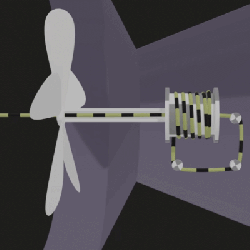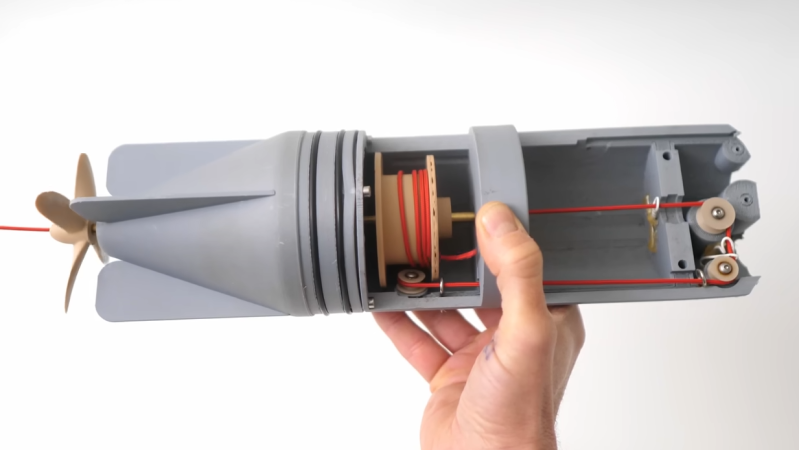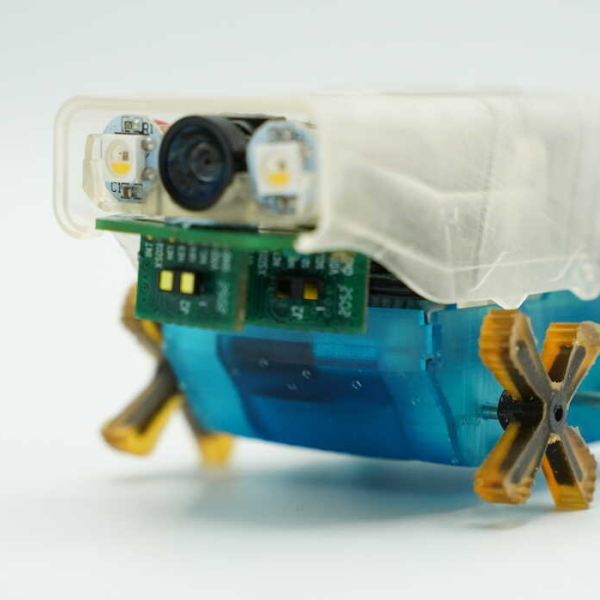The Brennan torpedo, invented in 1877 by Louis Brennan, was one of the first (if not the first) guided torpedoes of a practical design. Amazingly, it had no internal power source but it did have a very clever and counter-intuitive mode of operation: a cable was pulled backward to propel the torpedo forward.
If the idea of sending something forward by pulling a cable backward seems unusual, you’re not alone. How can something go forward faster than it’s being pulled backward? That’s what led [Steve Mould] to examine the whole concept in more detail in a video in a collaboration with [Derek Muller] of Veritasium, who highlights some ways in which the physics can be non-intuitive, just as with a craft that successfully sails downwind faster than the wind.
The short answer is gearing, producing more force on the propeller by pulling out lots of rope.
 Pulling the cable out the back of the device turns the propeller thanks to a pulley-type assembly with the prop shaft connected to a drum, as seen in the animation here. The actual Brennan torpedo was somewhat more complex, but the operating principle was the same.
Pulling the cable out the back of the device turns the propeller thanks to a pulley-type assembly with the prop shaft connected to a drum, as seen in the animation here. The actual Brennan torpedo was somewhat more complex, but the operating principle was the same.
The real thing had two cables coming out the back and drove two counter-rotating props. It could be steered by changing the relative speed at which the two cables were pulled, which caused a rudder to turn and allowed the torpedo to be guided. It really was very clever, and the Brennan torpedo was in service for over a decade before being superseded by designs with internal power systems that could be launched by ship.
The basic concept is explored with the help of a working model in the video embedded below, along with identifying what makes the physics tricky to intuit. If you have a few extra minutes to admire the importance of leveraging mechanical advantage, check it out.

















cool
AI’s take: “In summary, releasing 4 billion tonnes of CO2 would accelerate climate change, potentially worsening many of the environmental issues we already face, including rising temperatures, more extreme weather, and severe impacts on ecosystems and human societies. While this is a smaller amount compared to global emissions, it would still significantly contribute to the ongoing environmental crisis.”
Where is all this coming from and how is it relevant?
Sorry. Prolly not the best to vent cautionary vitriol.
Still, the mechanism of the Brennan Torpedo applied to air-borne lifting craft. is interesting (well I think, anyway). Loop the tether, and you can have an quasi-permanent hovering platform.
The opposite of disillusionment is enchantment or idealism. – Just a thought.
I love how so many people got musk derangement syndrome to complement their trump derangement syndrome as soon as the musk man decided he liked orange better than gutter poo xD
Come on, buddy! We’re talking about making torpedos move with string here, not what the brawndo chatbot 9000 (brought to you by carl’s jr.) scrapes off of cnn and fox news! Think with your head, McFly! Think!!!
Hating is easy. Now try doing something productive so you’re not a further drain on the rest of us, troll.
Don’t worry, he’ll trigger kessler syndrome and trap humanity on earth for the next couple thousand years or so.
Ironic that long after he’s dead, musk’s legacy will be trapping humanity on earth.
Or not.
More inclined to believe that the torpedo had a fly wheel (drum) a qty of the rope spinning the flywheel (Drum) while torpedo locked into place then once the torpedo released and the energy in the the flywheel propels it forward at speed by spinning the propeller ? we all seen the flywheel mini toy cars then at a certain point while it still has rope a tug on the left right does enough to change direction or the 2 drums spinning different speeds buts a directional curve in its transit while going forward. just my musing highly likely wrong on every level lol.
These were (afaik) coastal defence torpedoes where an operator could steer the weapon into a hostile ship, so the control by differential cable pull was an essential part of this
The mechanism reminds me of an old brain teaser / simple experiment with a spool of thread (or a yoyo): Place the spool on a flat surface with the thread coming out below the spool like __O. Pull on the string, and the spool will roll in the opposite direction.
Although, I did not know there was a real-life application of this.
In deep water how about one where the rope is attached to a weight that is released with the torpedo? That way it could be dropped overboard and the boat could keep moving.
I doubt that would have any advantage over something super simple like a wound spring. A big part of what made the Brennan work was that the engine driving it could be enormous and enormously powerful. To get the same effect the weight dropped overboard would have to be huge. And it would be pulling down and back at a shifting angle as it fell.
Maybe because the weight will go to the bottom of the sea ?
Aren’t there a bunch of simple kids’ toys that operate on this procedure? (insert a toothed line, pull it out quickly either with the toy on the ground or put on the ground immediately after, and it will shoot forward across the floor.)
And I don’t mean ‘simple’ to denigrate, but that the toys are usually easy to make/lower in cost.
Nope, that’s a flywheel. This remains powered. And those toys usually don’t work if you put them down, let go of everything but the line, and then pull on the line.
Wonderful ♥️